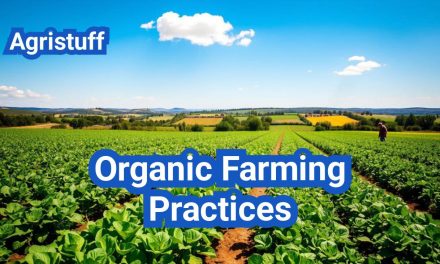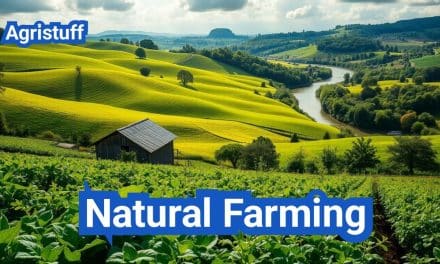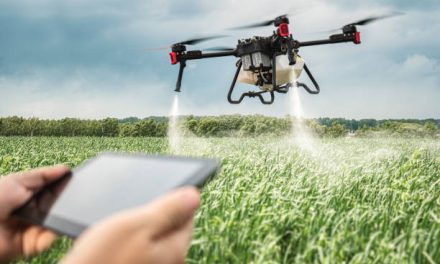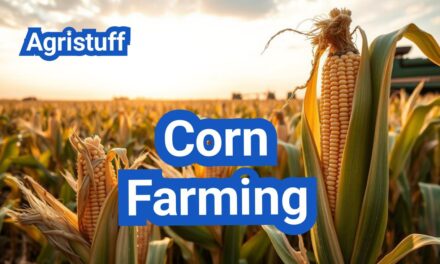Agriculture is a diverse field that encompasses various practices, including subsistence and commercial farming, as well as intensive and extensive agriculture. The different approaches to agriculture are shaped by factors such as climate, geography, and market demand.
Understanding the various types of agriculture is essential for appreciating the complexity of food production and the challenges faced by farmers worldwide. This article will explore the different kinds of agriculture, providing insights into their characteristics and significance.
Key Takeaways
- Agriculture encompasses a range of practices, from subsistence to commercial farming.
- Different types of agriculture are influenced by factors like climate and market demand.
- Understanding various agricultural practices is crucial for addressing global food production challenges.
- Agriculture can be categorized into intensive and extensive farming methods.
- The diversity in agricultural practices reflects the complexity of food production systems.
Understanding Types of Agriculture: A Comprehensive Overview
Understanding agriculture requires a deep dive into its historical development, its role in ensuring global food security, and its significant economic impact. Agriculture has been the foundation of human societies for thousands of years, evolving significantly over time.
The Evolution and Historical Development of Types of Agriculture
Agriculture has a rich history that dates back to ancient times. The transition from nomadic hunting to settled agriculture marked a significant turning point in human history, enabling the growth of cities and civilizations.
The early forms of agriculture were largely subsistence-based, with farmers growing crops and raising livestock to meet their family’s needs. Over time, agriculture evolved, and new technologies were developed, leading to increased productivity and the ability to support larger populations.
“The introduction of agriculture was a revolutionary step in human history, allowing for the production of surplus food and the emergence of complex societies.”
The development of agriculture has not been uniform across the globe. Different regions developed unique farming practices based on their climate, soil, and cultural traditions.
Agriculture’s Role in Global Food Security
Agriculture plays a crucial role in global food security, providing the world’s population with the food they need to survive. The global demand for food is increasing due to population growth, making it essential to improve agricultural productivity and efficiency.
Agricultural systems around the world are facing numerous challenges, including climate change, soil degradation, and water scarcity. Addressing these challenges is critical to ensuring that agriculture can continue to meet the world’s food needs.
Economic Impact of Agricultural Systems | Types of agriculture
Agriculture is not only vital for food security but also has a significant impact on the economy. In many countries, agriculture is a major contributor to GDP and a source of employment for millions of people.
| Economic Indicator | Agricultural Contribution | Global Impact |
|---|---|---|
| GDP | Significant contributor in many countries | Affects global economic stability |
| Employment | Source of livelihood for millions | Influences labor markets worldwide |
| Trade | Major component of international trade | Impacts global trade balances |
The economic impact of agriculture extends beyond the farm gate, influencing industries such as food processing, manufacturing, and retail.
Major Types of Agriculture Around the World
The diversity in agricultural practices worldwide is influenced by factors such as climate, culture, and technology. This diversity has given rise to various types of agricultural systems, each adapted to the specific conditions of the region in which they are practiced.
Traditional vs. Modern Agricultural Systems | Types of agriculture
Traditional agricultural systems are often characterized by their reliance on local knowledge, simple tools, and practices that have been passed down through generations. In contrast, modern agricultural systems incorporate advanced technology, machinery, and scientific knowledge to improve efficiency and productivity.
Traditional farming methods are typically labor-intensive and may involve practices such as crop rotation and organic farming. On the other hand, modern agricultural systems often rely on mechanization, irrigation, and the use of synthetic fertilizers and pesticides.
Regional Variations in Farming Practices | Types of agriculture
Regional variations in farming practices are influenced by factors such as climate, soil type, and cultural traditions. For example, in regions with heavy rainfall, farmers may adopt practices that mitigate the risk of flooding, while in arid regions, irrigation becomes a critical component of agricultural production.
- Farming practices in tropical regions often involve shifting cultivation and intercropping.
- In temperate regions, crop rotation and mixed farming are common.
- Arid regions rely heavily on irrigation to support agricultural production.
How to Identify Different Agricultural Systems | Types of agriculture
Identifying different agricultural systems involves understanding the local context, including the climate, soil, and cultural practices of the region. By examining the types of crops grown, the farming techniques used, and the level of technology employed, one can distinguish between various agricultural systems.
| Characteristics | Traditional Systems | Modern Systems |
|---|---|---|
| Technology Use | Low-level technology | Advanced machinery and technology |
| Farming Practices | Labor-intensive, crop rotation | Mechanized, monoculture |
Subsistence Agriculture Systems

Subsistence Agriculture is characterized by its focus on self-sufficiency, where farmers grow crops and raise livestock primarily for their family’s consumption. This traditional method of agriculture is crucial for the livelihood of many communities around the world.
Primitive Subsistence Farming Methods | Types of agriculture
Primitive subsistence farming involves simple techniques and tools, often relying on manual labor. This method is typically practiced in areas with abundant land and minimal technological advancements.
The practice is often associated with slash-and-burn techniques, where forests are cleared to make way for crops. While this method can be effective in the short term, it can lead to soil degradation and loss of biodiversity if not managed sustainably.
Intensive Subsistence Farming in Asia | Types of agriculture
Intensive subsistence farming is prevalent in densely populated regions, particularly in parts of Asia. This method involves cultivating small plots of land intensively to maximize yield, often using more advanced techniques and tools compared to primitive subsistence farming.
Key characteristics include:
- High labor input per unit of land
- Use of fertilizers and irrigation to enhance productivity
- Cropping patterns that may include multiple harvests per year
Shifting Cultivation and Nomadic Herding | Types of agriculture
Shifting cultivation involves rotating land use to allow for soil regeneration, a practice common in tropical forest regions. Nomadic herding, on the other hand, involves moving livestock to different grazing areas to avoid overgrazing and maintain pasture health.
| Practice | Description | Region |
|---|---|---|
| Shifting Cultivation | Rotating land for agriculture | Tropical Forests |
| Nomadic Herding | Moving livestock for grazing | Grasslands and Savannas |
Commercial Agriculture Practices
The commercial agriculture sector is characterized by its use of advanced technology and large-scale production methods, playing a crucial role in meeting the world’s food demands.
Commercial agriculture involves various farming practices, including large-scale plantation farming, which focuses on a single crop such as coffee, cocoa, or rubber. These plantations are often located in tropical regions and are crucial for the global supply of these commodities.
Large-Scale Plantation Farming | Types of agriculture
Large-scale plantation farming is a significant aspect of commercial agriculture. It involves the cultivation of a single crop over a vast area, often using monoculture practices. This method is highly efficient and allows for the production of large quantities of a specific crop, making it a vital component of global trade.
Mixed Crop-Livestock Systems | Types of agriculture
Mixed crop-livestock systems represent another important facet of commercial agriculture. These systems integrate the production of crops and livestock on the same farm, promoting ecological interactions and synergies between the two. This approach can enhance farm productivity and resilience, as well as contribute to more diverse and nutritious food production.
Specialized Commercial Farming | Types of agriculture
Specialized commercial farming refers to farming operations that focus on a specific product or production method. This could include dairy farming, poultry farming, or the cultivation of high-value crops. Specialization allows farmers to develop expertise and improve efficiency, often leading to higher quality products and better market competitiveness.
In conclusion, commercial agriculture practices, including large-scale plantation farming, mixed crop-livestock systems, and specialized commercial farming, are essential for meeting the global demand for food and other agricultural products. These practices not only contribute to food security but also play a significant role in the economies of many countries.
Intensive vs. Extensive Agricultural Systems

The choice between intensive and extensive agriculture depends on various factors, including resources and farming goals. Farmers must weigh the benefits and drawbacks of each system to make informed decisions.
Characteristics of Intensive Agriculture | Types of agriculture
Intensive agriculture involves high-input farming practices aimed at maximizing yields from a given area of land. This approach often relies on advanced technology, irrigation systems, and fertilizers to boost productivity.
Some key features of intensive agriculture include:
- High crop density
- Use of advanced irrigation systems
- Application of synthetic fertilizers and pesticides
- Mechanized farming techniques
Extensive Agriculture Approaches | Types of agriculture
In contrast, extensive agriculture involves large-scale farming with lower inputs per unit area. This method is often used in regions with abundant land and focuses on producing crops or raising livestock over a broader area.
Characteristics of extensive agriculture include:
- Large land areas
- Lower input costs
- Less reliance on technology
- Often associated with livestock grazing
| Aspect | Intensive Agriculture | Extensive Agriculture |
|---|---|---|
| Land Use | High crop density, efficient land use | Large land areas, less intensive use |
| Input Costs | High due to technology and fertilizers | Lower, relying on natural resources |
| Productivity | High yields per acre | Lower yields per acre, but larger total output |
How to Choose Between Intensive and Extensive Methods | Types of agriculture
When deciding between intensive and extensive agriculture, farmers should consider their resources, goals, and environmental conditions. Factors such as land availability, climate, market demand, and labor costs play crucial roles in this decision.
Farmers must also consider the environmental impact of their chosen agricultural system. Intensive farming can lead to soil degradation and water pollution, while extensive farming may result in habitat destruction if not managed sustainably.
By carefully evaluating these factors and understanding the characteristics of each agricultural system, farmers can make informed decisions that balance productivity with sustainability.
Industrial Agriculture and Factory Farming
Industrial agriculture, characterized by large-scale monoculture and intensive farming practices, is a dominant force in global food production. This modern agricultural approach has transformed the way food is produced, processed, and distributed.
Modern Industrial Farming Techniques | Types of agriculture
Modern industrial farming techniques involve the use of advanced technology and machinery to maximize efficiency and productivity. Some of the key features include:
- Mechanization: The use of tractors, harvesters, and other machinery to reduce labor costs and increase efficiency.
- Irrigation Systems: Advanced irrigation systems that optimize water use and reduce waste.
- Crop Management: Precision agriculture techniques, including crop monitoring and data analysis, to optimize crop yields.
Monoculture Production Systems | Types of agriculture
Monoculture production systems involve the cultivation of a single crop over a large area. This approach is often used in industrial agriculture to simplify farming practices and reduce costs. However, it can lead to:
- Soil Degradation: The loss of soil fertility due to the continuous cultivation of a single crop.
- Pest and Disease Pressure: The increased vulnerability to pests and diseases, as the lack of crop diversity can lead to the development of pesticide-resistant pests.
- Biodiversity Loss: The reduction of biodiversity, as natural habitats are converted into agricultural land.
Environmental and Social Implications | Types of agriculture
The environmental and social implications of industrial agriculture are significant. Some of the key concerns include:
- Water Pollution: The use of fertilizers and pesticides can lead to water pollution, posing a risk to human health and the environment.
- Greenhouse Gas Emissions: Industrial agriculture is a significant contributor to greenhouse gas emissions, primarily due to the use of fossil fuels and the release of nitrous oxide from fertilizers.
- Social Impacts: The shift towards industrial agriculture can lead to the displacement of small-scale farmers and rural communities, exacerbating social inequalities.
In conclusion, while industrial agriculture has increased food production and reduced costs, it is crucial to address its environmental and social implications to ensure a sustainable food system for the future.
Types of Sustainable Agriculture

As the world grapples with environmental challenges, sustainable agriculture emerges as a vital strategy for a more resilient food system. Sustainable agriculture encompasses a range of practices aimed at maintaining the health of the land while producing food. This approach is crucial for environmental conservation and involves practices like regenerative and conservation agriculture.
Principles of Sustainable Farming | Types of agriculture
Sustainable farming is guided by several key principles, including the conservation of natural resources, enhancement of ecosystem services, and promotion of social equity. These principles are fundamental to ensuring that agricultural practices are environmentally friendly and socially responsible.
- Conservation of natural resources through efficient use of water and reduction of soil erosion.
- Enhancement of ecosystem services by promoting biodiversity and improving soil health.
- Promotion of social equity through fair labor practices and support for local communities.
Regenerative Agriculture Practices | Types of agriculture
Regenerative agriculture focuses on regenerating the health of the soil through practices like no-till or reduced-till farming, cover cropping, and integration of organic amendments. This approach not only improves soil health but also enhances biodiversity and ecosystem services.
Conservation Agriculture Methods | Types of agriculture
Conservation agriculture involves minimal disturbance of the soil, maintaining a permanent soil cover, and practicing crop rotations. These methods help in reducing soil erosion, improving soil health, and promoting efficient water use.
| Method | Description | Benefits |
|---|---|---|
| Minimal Soil Disturbance | Reducing tillage to minimize soil erosion | Soil Conservation, Improved Soil Health |
| Permanent Soil Cover | Maintaining cover crops or residues | Reduced Erosion, Improved Soil Moisture |
| Crop Rotations | Rotating crops to improve soil fertility | Improved Soil Fertility, Reduced Pests and Diseases |
How to Transition to Sustainable Farming | Types of agriculture
Transitioning to sustainable farming requires a comprehensive approach that includes assessing current practices, setting clear goals, and implementing changes gradually. Farmers can start by adopting one or two sustainable practices and gradually scaling up.
Key Steps:
- Assess current farming practices and identify areas for improvement.
- Set clear goals for transitioning to sustainable agriculture.
- Start with small, manageable changes and gradually scale up.
- Monitor progress and adjust strategies as needed.
By transitioning to sustainable agriculture, farmers can contribute to a more resilient food system while promoting environmental stewardship and social equity.
Organic Farming Systems

Organic farming represents a significant departure from conventional farming methods by avoiding synthetic fertilizers and pesticides. This approach to farming is gaining traction globally due to its potential to improve environmental sustainability and produce healthier crops.
Certified Organic Production Standards | Types of agriculture
Certified organic production is governed by strict standards that vary by country but generally include criteria such as the avoidance of genetically modified organisms (GMOs), synthetic fertilizers, and pesticides. In the United States, the USDA National Organic Program (NOP) sets these standards.
Key requirements for certified organic production include:
- Use of natural farming practices
- Avoidance of GMOs and synthetic substances
- Maintenance of detailed records
- Annual inspections by certifying agencies
Biodynamic Agriculture Principles | Types of agriculture
Biodynamic agriculture is a holistic approach that treats the farm as a living organism. It emphasizes the use of compost and natural preparations to enhance soil fertility and biodiversity.
The core principles of biodynamic farming include:
- Integration of crops and livestock
- Use of biodynamic preparations
- Consideration of lunar cycles in farming activities
Natural Farming Approaches | Types of agriculture
Natural farming is an approach that minimizes human intervention, allowing natural processes to govern farming. It emphasizes the use of local species and minimal external inputs.
| Farming Approach | Key Characteristics |
|---|---|
| Certified Organic | Avoids synthetic fertilizers and pesticides, follows NOP standards |
| Biodynamic Farming | Holistic, uses natural preparations, considers lunar cycles |
| Natural Farming | Minimal human intervention, uses local species, minimal external inputs |
Agroforestry and Permaculture Designs

By combining agriculture and forestry, agroforestry and permaculture offer holistic approaches to sustainable land use. These innovative farming practices focus on integrating trees into agricultural landscapes, promoting ecological balance, and enhancing biodiversity.
Integrating Trees in Agricultural Landscapes | Types of agriculture
Agroforestry involves the intentional integration of trees into farming systems to promote ecological interactions and synergies. This approach can improve soil health, reduce erosion, and increase biodiversity. Tree-crop interactions can also enhance crop productivity and provide additional income streams through the sale of tree products, such as fruits, nuts, or timber.
“Agroforestry systems are more diverse and resilient than monoculture farming systems, providing a range of ecosystem services that benefit both the environment and farmers.”
Permaculture Design Principles | Types of agriculture
Permaculture is a design system that aims to create sustainable and self-sufficient ecosystems by mimicking nature. Key principles include observing and working with natural patterns, catching and storing energy, and promoting biodiversity. Permaculture designs often incorporate a variety of plants and animals, creating diverse and resilient ecosystems.
- Observe and interact with nature
- Catch and store energy
- Obtain a yield
- Apply self-regulation and accept feedback
- Use and value renewable resources and services
Implementing Agroecological Systems | Types of agriculture
Implementing agroecological systems like agroforestry and permaculture requires careful planning and design. It involves assessing the local ecosystem, selecting appropriate crops and tree species, and designing the layout to maximize ecological benefits. Farmer training and education are crucial for the successful adoption of these practices.
“The future of farming lies in sustainable practices that work with nature, not against it. Agroforestry and permaculture are at the forefront of this movement.”
By adopting agroforestry and permaculture designs, farmers can contribute to a more sustainable food system while improving their livelihoods. These practices not only enhance environmental health but also promote social equity and economic viability.
Aquaculture and Soilless Farming Systems

As the global demand for food continues to grow, aquaculture and soilless farming are emerging as vital components of modern agriculture. These innovative farming methods offer sustainable alternatives to traditional agriculture, helping to meet the world’s increasing food needs while minimizing environmental impact.
Fish and Seafood Farming Methods | Types of agriculture
Aquaculture involves the cultivation of fish, shellfish, and other seafood in controlled environments. This method of farming has gained popularity due to its potential to provide a sustainable source of protein. Modern aquaculture practices include:
- Recirculating Aquaculture Systems (RAS): These systems recycle water, minimizing waste and reducing the environmental footprint.
- Offshore Aquaculture: This involves farming in the open ocean, which can help reduce the pressure on coastal ecosystems.
- Integrated Multi-Trophic Aquaculture (IMTA): IMTA systems cultivate multiple species together, mimicking natural ecosystems and promoting biodiversity.
Hydroponic Growing Techniques | Types of agriculture
Hydroponics is a method of growing plants in a nutrient-rich solution rather than soil. This technique allows for precise control over growing conditions, leading to increased crop yields and water efficiency. Some common hydroponic systems include:
- Nutrient Film Technique (NFT): Plants are grown in long, narrow channels with a continuous flow of nutrient-rich solution.
- Ebb and Flow (Flood and Drain) Systems: The growing area is periodically flooded with nutrient solution and then drained.
- Drip Irrigation Systems: Nutrient solution is delivered directly to the roots of plants through a network of tubes and drippers.
Aquaponics: Combined Systems | Types of agriculture
Aquaponics combines aquaculture and hydroponics in a symbiotic system where fish and plants coexist. The waste produced by fish provides nutrients for the plants, while the plants help purify the water for the fish. This closed-loop system offers several benefits, including:
- Water Conservation: Aquaponics uses significantly less water than traditional farming methods.
- Increased Crop Diversity: By integrating fish and plant production, aquaponics allows for a diverse range of crops to be grown.
- Reduced Environmental Impact: The closed-loop nature of aquaponics minimizes waste and reduces the need for external inputs.
Essential Farm Equipment for Different Types of Agriculture

The right farm equipment is essential for the success of different agricultural systems, from subsistence farming to large-scale commercial operations. The diversity in farming practices worldwide necessitates a wide range of machinery and tools, each designed to optimize specific aspects of the cultivation process.
Types of Farm Tractors and Their Applications | Types of agriculture
Farm tractors are the backbone of modern agriculture, providing the power needed for various farming operations. Different types of tractors are designed for specific tasks, including:
- Utility Tractors: Versatile and used for a variety of tasks such as plowing, tilling, and hauling.
- Row Crop Tractors: Designed for farming row crops, these tractors have higher ground clearance and are used for tasks that require precision.
- Track Tractors: Ideal for wet or soft soil conditions, track tractors provide better traction and reduce soil compaction.
Tillage and Soil Preparation Equipment | Types of agriculture
Tillage equipment is crucial for preparing the soil for planting. It helps in breaking up the soil, removing weeds, and mixing in nutrients. Common types include:
- Plows: Used for initial soil cultivation, turning over the soil to prepare it for planting.
- Disc Harrows: Break up and smooth out the soil, preparing it for seeding.
- Rotary Tillers: Effective for smaller areas, these tillers mix the soil and remove weeds.
Harvesting and Post-Harvest Machinery | Types of agriculture
Harvesting equipment is designed to efficiently gather crops, minimizing loss and damage. Post-harvest machinery is used for processing and storing the harvested produce. Examples include:
- Combine Harvesters: Used for grain crops, these machines cut, thresh, and separate the grain in one operation.
- Forage Harvesters: Designed for harvesting silage, these machines chop and collect crop material.
- Grain Dryers: Used to dry grains to a moisture level suitable for storage.
How to Select the Right Equipment for Your Farm | Types of agriculture
Selecting the appropriate farm equipment involves considering several factors, including the type of crop, farm size, soil type, and budget. It’s also important to consider the equipment’s compatibility with existing machinery and the availability of spare parts and service.
“The choice of farm equipment can significantly impact the efficiency and profitability of farming operations. It’s crucial to assess your specific needs and choose equipment that aligns with your agricultural practices.”
By understanding the different types of farm equipment available and their applications, farmers can make informed decisions that enhance their productivity and contribute to sustainable agricultural practices.
Types of Irrigation Systems for Agriculture

Irrigation systems are vital for agriculture, and understanding the different types can help farmers make informed decisions to optimize their crop yields and water usage.
There are several irrigation systems used in agriculture, each with its unique characteristics and benefits. The main types include surface irrigation, sprinkler irrigation, and drip irrigation.
Surface Irrigation Methods | Types of agriculture
Surface irrigation involves applying water to the surface of the soil, which then flows over the land by gravity. This method is further divided into subtypes such as border irrigation, basin irrigation, and furrow irrigation. Surface irrigation is one of the oldest and most common methods used worldwide.
As noted by irrigation experts, “Surface irrigation is simple and cost-effective but requires careful land leveling and can result in water loss due to runoff and evaporation.”
“The efficiency of surface irrigation can be improved by proper land preparation and water management practices.”
Sprinkler and Center Pivot Systems | Types of agriculture
Sprinkler irrigation systems distribute water through a network of pipes and sprinklers, mimicking rainfall. Center pivot irrigation is a type of sprinkler irrigation where a lateral move irrigation system pivots around a central point, providing uniform water distribution. These systems are highly efficient and suitable for large-scale farming operations.
The use of sprinkler and center pivot systems has become increasingly popular due to their ability to conserve water and reduce labor costs. According to agricultural studies, “Sprinkler systems can achieve high irrigation efficiency, often above 80%, depending on the design and management.”
Drip and Micro-Irrigation Technologies | Types of agriculture
Drip irrigation delivers water directly to the roots of plants through a network of tubes and drippers, minimizing evaporation and runoff. Micro-irrigation is a broader term that includes drip irrigation as well as other low-volume irrigation methods. These technologies are highly efficient and particularly beneficial for water-sensitive crops.
Drip irrigation is praised for its water-saving capabilities. As stated in a report on sustainable agriculture, “Drip irrigation can reduce water usage by up to 50% compared to traditional surface irrigation methods.”
Selecting the Optimal Irrigation System | Types of agriculture
Choosing the right irrigation system depends on several factors, including crop type, soil characteristics, climate, and available water resources. Farmers must consider these factors to select an irrigation method that maximizes water efficiency and crop productivity.
To make an informed decision, farmers should assess their specific needs and conditions. “The optimal irrigation system is one that balances water conservation with crop yield maximization, taking into account the local environmental and economic conditions.”
Crop Types and Specialized Production Methods

The diversity in crop types necessitates a range of specialized production methods, each tailored to specific agricultural needs. Understanding these different approaches is crucial for optimizing crop yields and ensuring food security.
Grain and Field Crop Production | Types of agriculture
Grain and field crops are staples in many agricultural systems worldwide. These crops, including wheat, corn, and soybeans, are typically grown on a large scale using mechanized farming techniques. Precision agriculture plays a significant role in grain production, with technologies like GPS-guided tractors and drones enhancing efficiency and yield.
Fruit and Vegetable Farming Systems | Types of agriculture
Fruit and vegetable farming requires more labor-intensive methods compared to grain production. These crops often demand specific soil conditions and microclimates. Techniques such as integrated pest management (IPM) and organic farming practices are commonly used to improve yields and reduce environmental impact.
Specialty and Cash Crops | Types of agriculture
Specialty crops, including nuts, spices, and medicinal herbs, are grown for their unique value. These crops often require specialized knowledge and equipment. Cash crops, on the other hand, are grown primarily for sale rather than for subsistence. The production of these crops is influenced by market demand and economic factors.
Best Soil Types for Different Crops | Types of agriculture
The suitability of soil for different crops varies significantly. For instance, root crops like potatoes and carrots prefer well-drained, loose soils, while rice paddies require flooded conditions. Understanding the soil characteristics and matching them with the appropriate crops is essential for maximizing agricultural productivity.
By adopting the right production methods and understanding the specific needs of different crops, farmers can improve their yields and contribute to global food security.
The Future of Farming and Agriculture
The future of farming is intricately linked with sustainable agriculture practices and technological innovations. As the global population continues to grow, the agricultural sector must adapt to meet the increasing demand for food while minimizing its environmental footprint.
Sustainable agriculture practices, such as regenerative agriculture and conservation agriculture, are gaining traction worldwide. These approaches prioritize soil health, biodiversity, and efficient water use, ensuring a more resilient food system.
Agricultural innovations, including precision farming and vertical farming, are also transforming the industry. These advancements enable farmers to optimize crop yields, reduce waste, and promote eco-friendly practices.
As we move forward, it is essential to continue investing in research and development, promoting sustainable agriculture practices, and fostering a culture of innovation within the agricultural community. By doing so, we can create a more sustainable and food-secure future.
FAQ
What are the different types of agriculture?
There are several types of agriculture, including subsistence agriculture, commercial agriculture, intensive agriculture, extensive agriculture, industrial agriculture, sustainable agriculture, organic farming, agroforestry, permaculture, aquaculture, and soilless farming.
What is the difference between intensive and extensive agriculture?
Intensive agriculture involves using high-yielding crop and animal varieties, irrigation, fertilizers, and pesticides to maximize production on a relatively small area of land. Extensive agriculture, on the other hand, involves using larger areas of land with lower inputs and often lower yields.
What are the benefits of sustainable agriculture?
Sustainable agriculture promotes soil health, biodiversity, and efficient water use, reducing the environmental impact of farming. It also improves crop yields and quality, supports local economies, and enhances rural livelihoods.
What is organic farming, and how does it differ from conventional farming?
Organic farming involves using natural methods to control pests and diseases, and avoiding synthetic fertilizers and pesticides. It differs from conventional farming in its focus on soil health, biodiversity, and environmental sustainability.
What is agroforestry, and how can it benefit agriculture?
Agroforestry involves integrating trees into agricultural landscapes to promote ecological interactions and synergies. It can benefit agriculture by improving soil health, reducing erosion, and increasing biodiversity.
What are the different types of irrigation systems used in agriculture?
Common irrigation systems include surface irrigation, sprinkler irrigation, center pivot irrigation, drip irrigation, and micro-irrigation. The choice of irrigation system depends on factors like crop type, soil type, and climate.
What is precision agriculture, and how can it improve farming?
Precision agriculture involves using technology, such as GPS and drones, to optimize crop management, reduce waste, and improve yields. It can improve farming by enabling data-driven decision-making and more efficient use of resources.
What are the benefits of aquaculture and soilless farming?
Aquaculture and soilless farming can provide a sustainable and efficient way to produce food, reducing the environmental impact of traditional farming. They can also improve crop yields and quality.
How can farmers choose the right equipment for their agricultural practices?
Farmers should consider factors like crop type, soil type, and farm size when selecting equipment. They should also consider the equipment’s efficiency, reliability, and maintenance requirements.
What are the different types of farm tractors and their applications?
Farm tractors come in various sizes and types, including utility tractors, row crop tractors, and track tractors. They are used for tasks like tillage, planting, and harvesting, and can be equipped with various attachments and implements.
What are the best soil types for different crops?
Different crops have different soil requirements. For example, crops like corn and soybeans prefer well-draining soils with a mix of sand, silt, and clay, while crops like rice and wheat can tolerate a range of soil types.
Conclusion of: Types of Agriculture
Agriculture has been a cornerstone of human development, evolving continuously to meet the growing needs of societies around the globe. Understanding the various types of agriculture is essential as it directly impacts our food supply, economy, and the environment. In this comprehensive guide, we’ll explore the different types of agriculture, examining their unique practices, characteristics, and examples.
Subsistence Agriculture | Types of agriculture
Subsistence agriculture is one of the most traditional types of agriculture, primarily focused on growing enough food to meet the needs of the farmer and their family. This farming method utilizes minimal technology and generally involves manual labor. Examples include traditional farming practices in rural Africa and Asia.
External link: Food and Agriculture Organization of the United Nations
Commercial Agriculture | Types of agriculture
Another prevalent type of agriculture is commercial agriculture, aiming for profit generation by producing crops or livestock on a large scale. This form of agriculture uses extensive machinery, high-yield crop varieties, and advanced techniques like genetically modified organisms (GMOs).
External link: U.S. Department of Agriculture
Intensive Agriculture
Intensive agriculture involves maximizing output from a small area of land through significant inputs of labor, fertilizers, and capital. This method often employs advanced technology, such as drip irrigation, hydroponics, and controlled environments to enhance productivity.
External link: International Fertilizer Association
Extensive Agriculture
In contrast to intensive farming, extensive agriculture utilizes large areas of land with lower inputs of labor and capital per land area. This type of agriculture is commonly practiced in regions with abundant land resources, such as ranching in the U.S. and Australia.
External link: Rangelands West
Organic Agriculture
Organic agriculture emphasizes the use of natural substances and processes to grow crops and raise livestock. It avoids synthetic pesticides, fertilizers, genetically modified organisms, and antibiotics, thus promoting environmental sustainability and animal welfare.
External link: Organic Farming Research Foundation
Plantation Agriculture
Plantation agriculture involves large-scale monoculture farms, typically in tropical regions. Crops like tea, coffee, rubber, and bananas are cultivated primarily for export. This farming method employs significant capital investment and labor forces.
External link: Fairtrade International
Mixed Agriculture
Mixed agriculture combines crop farming with livestock rearing on the same farm. This integrated system allows farmers to use resources efficiently, with animal waste used as fertilizer and crop residues providing animal feed.
External link: International Livestock Research Institute
Shifting Agriculture
Shifting agriculture, also known as slash-and-burn farming, involves clearing forest land for cultivation. After several years, the land is abandoned to recover fertility naturally. This type of agriculture is prevalent in the Amazon basin and parts of Africa and Asia.
External link: World Resources Institute
Pastoralism
Pastoralism is centered around raising livestock such as cattle, sheep, and goats, primarily for subsistence purposes. Pastoralists typically move their herds seasonally to access grazing areas, a practice common in semi-arid and arid regions.
External link: Pastoralist Knowledge Hub
Vertical Agriculture
Vertical agriculture refers to farming practices carried out in vertically stacked layers, typically within controlled environments like greenhouses or warehouses. This innovative method saves space, reduces resource usage, and allows urban food production.
External link: Association for Vertical Farming
Hydroponics and Aquaponics
These modern agricultural methods involve soil-less cultivation. Hydroponics uses nutrient-rich water to grow plants, while aquaponics integrates hydroponics with fish farming, where fish waste provides nutrients for the plants.
External link: Aquaponics Association
Permaculture
Permaculture emphasizes sustainable and self-sufficient agricultural ecosystems. By mimicking natural ecosystems, it promotes biodiversity, soil health, and resource conservation, providing long-term food security and environmental benefits.
External link: Permaculture Research Institute
Agroforestry
Agroforestry combines agriculture with forestry, integrating trees and shrubs into farming landscapes. This practice enhances biodiversity, improves soil quality, and provides economic and ecological benefits.
External link: World Agroforestry
Conservation Agriculture
Conservation agriculture aims to improve agricultural sustainability by minimizing soil disturbance, maintaining soil cover, and practicing crop rotation. It enhances soil health, productivity, and resilience against climate change.
External link: Conservation Agriculture Network
Final Thought
Understanding various types of agriculture is crucial to addressing global food security, environmental sustainability, and economic stability. Each agricultural type has its strengths and weaknesses, and choosing the appropriate method depends on specific regional and economic contexts. By adopting sustainable agricultural practices, humanity can move toward a more resilient and food-secure future.










